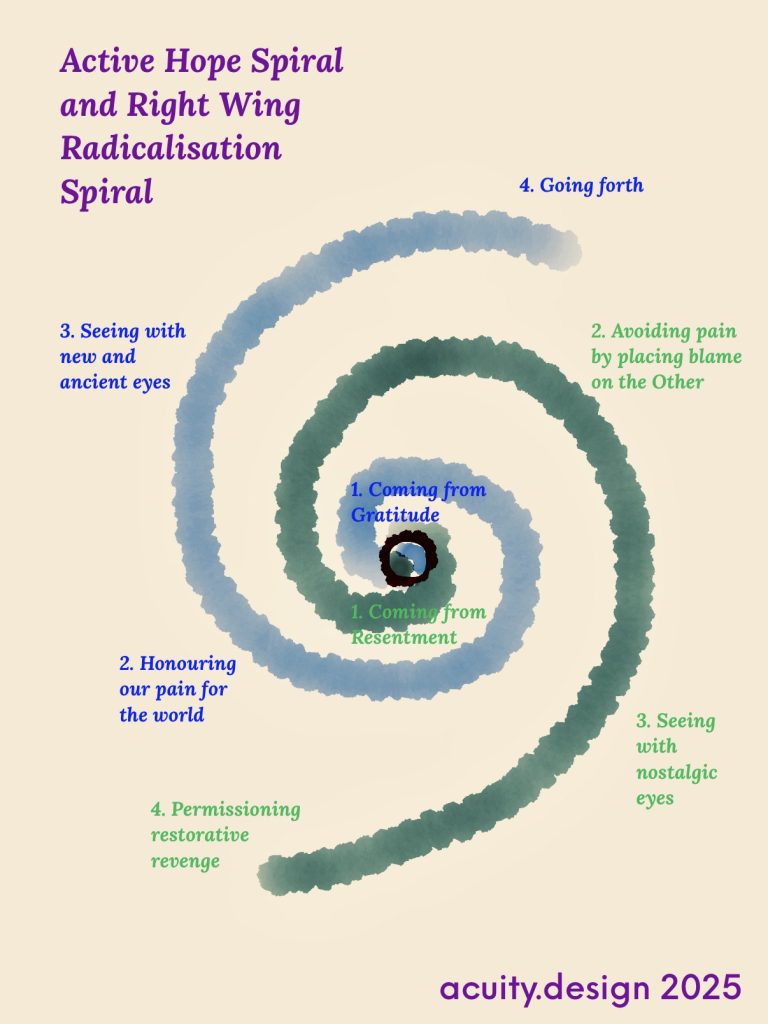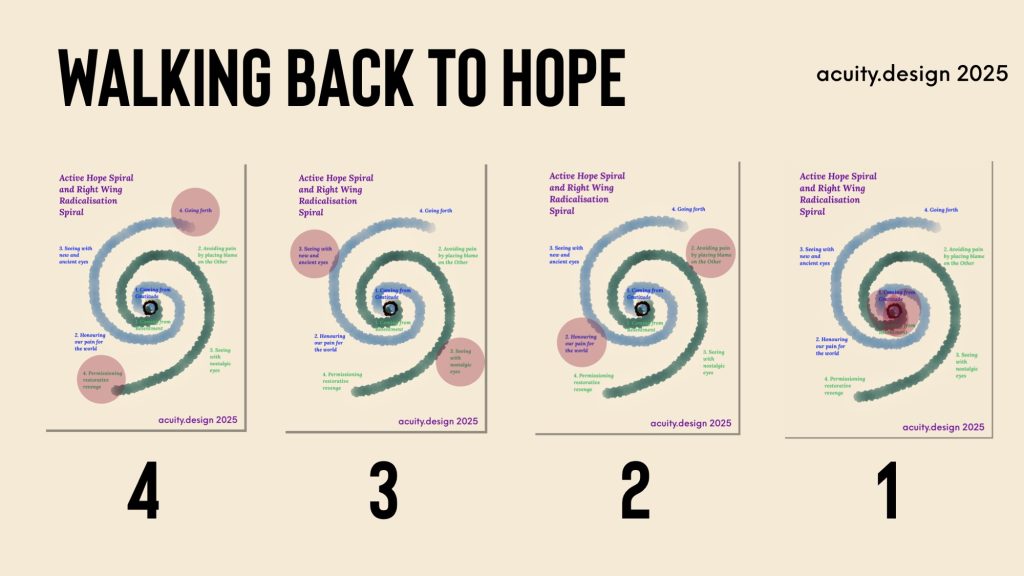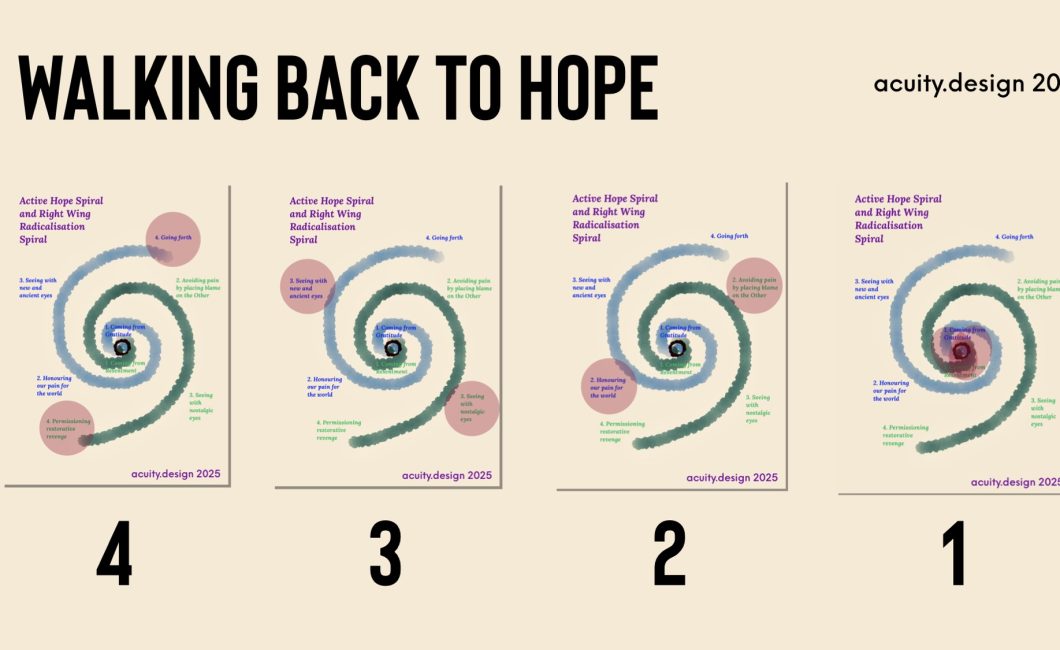
I attended an Active Hope workshop yesterday run by Linda Aspey. It’s a theory I had not encountered before. I was looking for a clearly communicable story of positive hope.
‘Better stories’ is often mentioned when people worry about the current preponderance of doom or authoritarian narratives. What they mean by ‘better’ can be a bit vague though so I do keep looking. More direct, more emotionally-centred and less overwhelmed by explanations seem to be factors. Active Hope seemed to offer that.
The Spiral of Active Hope
There is a spiral pattern in Active Hope that roots hope in personal gratitude and honouring pain.
The latter point is interesting after attending a Systemic Constellation workshop earlier in the week. Feeling, holding and releasing trauma and pain passed thru generations is something that comes up in that methodology.
Feeling gratitude and feeling pain (as basis of feeling compassion) is important.
The Active Hope spiral does ‘fix’ a problem with a lot of Futurology techniques that forget the past and fail to root the future in the breadth of human feelings. I wrote about that issue in post called Presentology.
The other spiral
Due to civic assembly work in last few years, I could not help noticing that the spiral seemed to have some similarities to the Right-Wing Radicalisation narrative noted in books like Disaster Nationalism.
There are spirals in my posts describing that process and how breaking the spirals may help. This one on Narrative of Rage contains some such diagrams.
That the Active Hope spiral resembles the Right Wing Radicalisation spiral is, ironically, proof that it is a useful narrative model for now. The Right are succeeding with their short, emotional stories of immigration and lost communities. If there is an alternative path that leads to hope not hate then that is good.
Walking back to Gratitude

The diagram in this post is also like the double spiral I encounter each year at Winter Solstice in Stroud.
There are paths rooted in the centre – rooted in the person and their movement thru time. One from gratitude and one from resentment. They lead to different futures. One of hope, one of violence.
What I think about now is that it might be possible to walk people backwards thru the spiral.
Back from the radicalisation, back to their heart and back onto a path that starts in what they appreciate and feel glad about.
Recognising two paths means we can encounter people where they are and accompany them back to where they need to be. We do not deny their experiences but do actively question why they are on a path leading to violence not communal hope.
To finish, here are some possible questions to ask while walking back from hate and othering to gratitude and hope:
- Why is your solution an act of violence?
- Why is your perspective so tightly nostalgic about a lost past?
- Why do you place blame for pain on an Other and not honour the pain of your community and ancestors
- Why do you root your sense of self in resentment not gladness?
